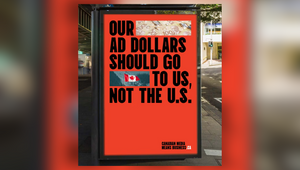
US Probe into Agency In-house Production Bid Rigging Sends Shockwaves Round Industry

The revelation that the United States’ Department of Justice (DOJ) is investigating advertising agencies over their use of in-house production units has shone a spotlight on practices long complained about by independent production companies and VFX studios.
An article, published in the Wall Street Journal on December 6, said that government antitrust attorney Rebecca Meiklejohn was investigating claims of bid-rigging and price-fixing.
The article says that the DOJ is investigating whether some agencies had been distorting the bidding process in favour of their own in-house production units, forcing independent production and post production companies to inflate their prices. However, there is currently no indication of exactly which groups are implicated in the investigation and just how broad the scope of the probe is.
WPP has declined to comment and as yet Omnicom and Publicis Groupe could not be reached.
As reported by Ad Age, IPG has released a statement confirming that it is cooperating with the US government on the investigation, but that its own policies required “triple bids on all projects above a minimal dollar threshold”.
A source at Havas Group told LBB, “We are not concerned, I can just confirm that TV production is a very small activity for Havas in the US, this story is not really an issue for us.”
In the US, the issue of in-house production units and uncompetitive practices is one that the Association of Independent Creative Editors (AICE) has been working to highlight for some time now. In 2014, the AICE issued an official statement highlighting concerns around issues of transparency, neutrality and the practice ‘check bids’ (inviting independent companies to pitch for business, a process that can cost these companies thousands of dollars at a time, simply to make up numbers on a pitch they cannot win).
The investigation may be focused on the US for now, but it has also drawn attention to the broader tension between in-house production units and independent vendors in markets around the world and the question of transparency.
In London, the Advertising Producers’ Association (APA) responded to the revelation with a memo to its members. The statement says that the APA advocates that its members do not bid against in-house production companies and that clients should be more questioning. (You can read the full statement here.)
Steve Davies, the Chief Executive of the APA told LBB that while he didn’t want to comment on the legalities, the investigation did highlight the broader issue of uncompetitive practices hampering independent production, VFX, editing and sound companies.
“Anything that raises the spotlight on the issue is good because it will get clients to think about the issue,” he said, explaining that he didn’t want to suggest that all agencies were behaving badly.
One leading agency figure, who wished to remain anonymous, was keen to state, “It’s an interesting article, but the investigation should be about whether clients’ money is being spent in the most robust, rigorous way on the best talent possible in order to give the best result… or is it a convenient solution that supports a revenue stream into an agency?”
The same individual argued that the issue went beyond bid-rigging. By taking a cut of the budget automatically, they said, in-house production units were not giving clients access to the best talent and value for money. They also said that as production had been turned into a revenue stream, they had worked on jobs which had been driven by financial reasons rather than for creative benefit of clients. On the other hand, they did say that there were times when in-house production units could provide efficiencies for clients, for example by avoiding duplication.
Pat Murphy, of MurphyCobb & Associates, an independent intermediary that helps clients understand and scrutinize the production process, has been fielding calls from marketers since the story broke.
He said that although these problems were common knowledge, individual production suppliers had been unwilling to speak out and risk losing more business from agencies.
“Suppliers who rely on income from an agency are scared to speak out. It's up to the industry as a group to make a stand against poor and non-transparent practices,” he said. “'We all know this has gone on for years, but now it's on an industrial scale. If a client is using an agency in-house production co. I would suggest there needs to be heightened scrutiny, and transparency over the costs, and process. Their shareholders deserve that due diligence.”
Regardless of the legal specifics of the US investigation, he said that the inquiry raised questions for marketers. “Now the cat’s out of the bag, clients have a choice. Do I take the easy route and leave my production with the in-house agency prod co, or do I spend a little time building a better model that fits my need and gives me a bigger bang for my buck?”
The investigation also taps into wider industry concerns. The agency model, for example, has undergone considerable disruption in recent years, and building in-house production capabilities has been viewed as one way to increase revenue. In some cases, agency producers tasked with commissioning vendors are now directly employed by the holding company’s production unit and not by the agency.
What’s more, in the age of social media and the ‘always-connected’ world and the demand for reactive content, most agencies have some form of production capabilities, however basic those may be. One possible solution offered up by several people LBB spoke to was that where an in-house production company is bidding against independents, a neutral third party could oversee and regulate the pitching process.
It is also the case that production companies are increasingly working directly with clients, working directly with brands’ in-house creative teams or supplying their own creative offering.
“I do understand agencies are under terrible cost pressure and they’re reacting to that by trying to keep more money in-house. From an agency point of view, that may be legitimate, but my concern is that clients are being misinformed,” said the APA’s Steve Davies, who said that the issue was fundamentally about allowing a truly competitive marketplace.
The potential consequences of the DOJ investigation are unclear. Whether legal proceedings will remain isolated to the United States or will be picked up by other governments is one question that will make for a worrying 2017 for some. What’s more, we may see investigations going beyond the question of production – earlier in the year the Association of National Advertisers (ANA) in the US revealed non-transparent practices such as media agencies not passing on rebates to clients. According the Wall Street Journal, an ‘early draft’ of the ANA’s report also included reference to ethical problems regarding the relationship between some creative agencies, in-house production units and independent production and VFX companies. This did not make it into the final draft of the ANA’s report, though it did attract the attention of the DOJ investigation team.
But we’ll also be watching to see how industry bodies, brand clients, holding companies and independents come together to address issues of transparency and neutrality.















